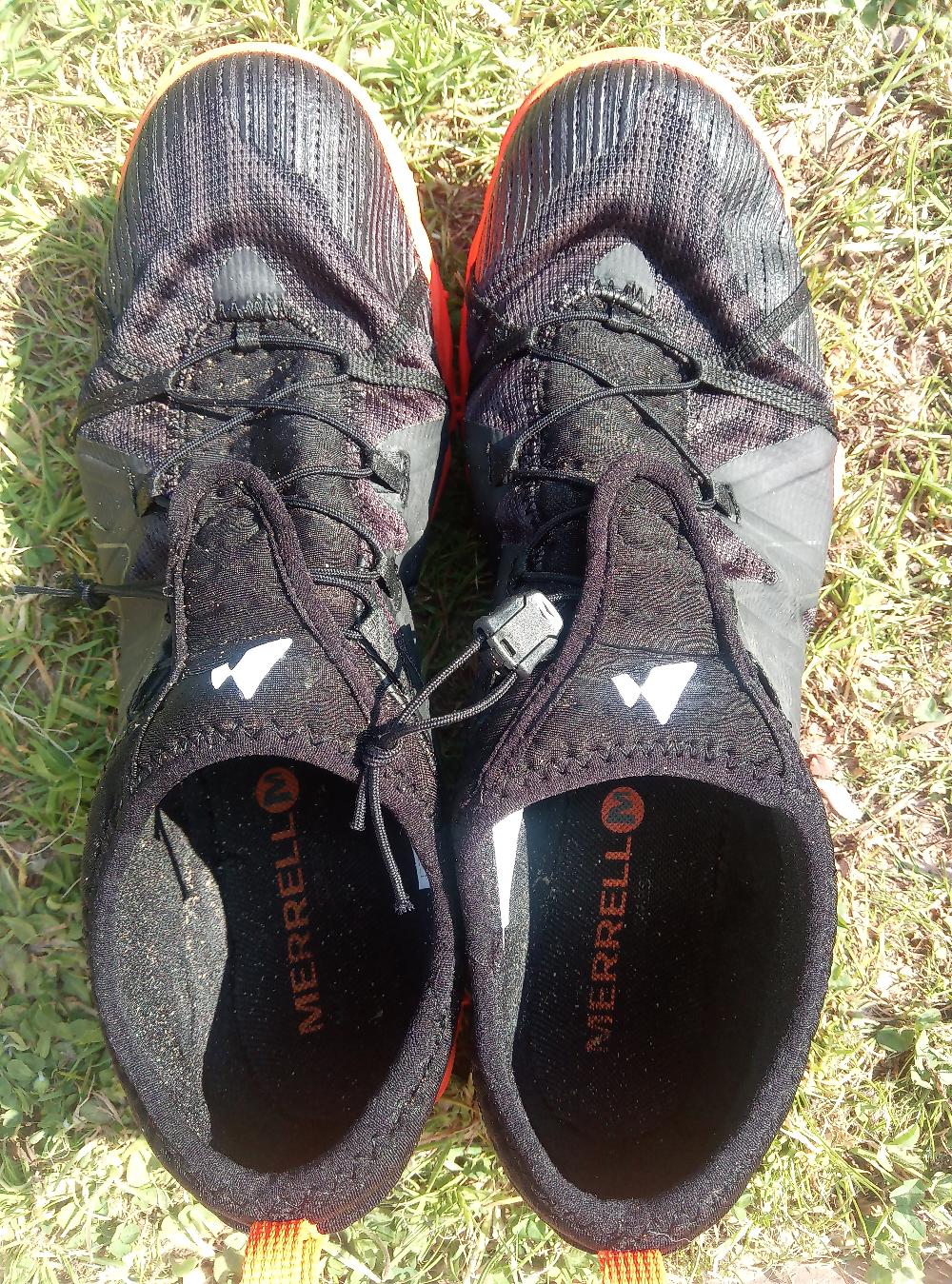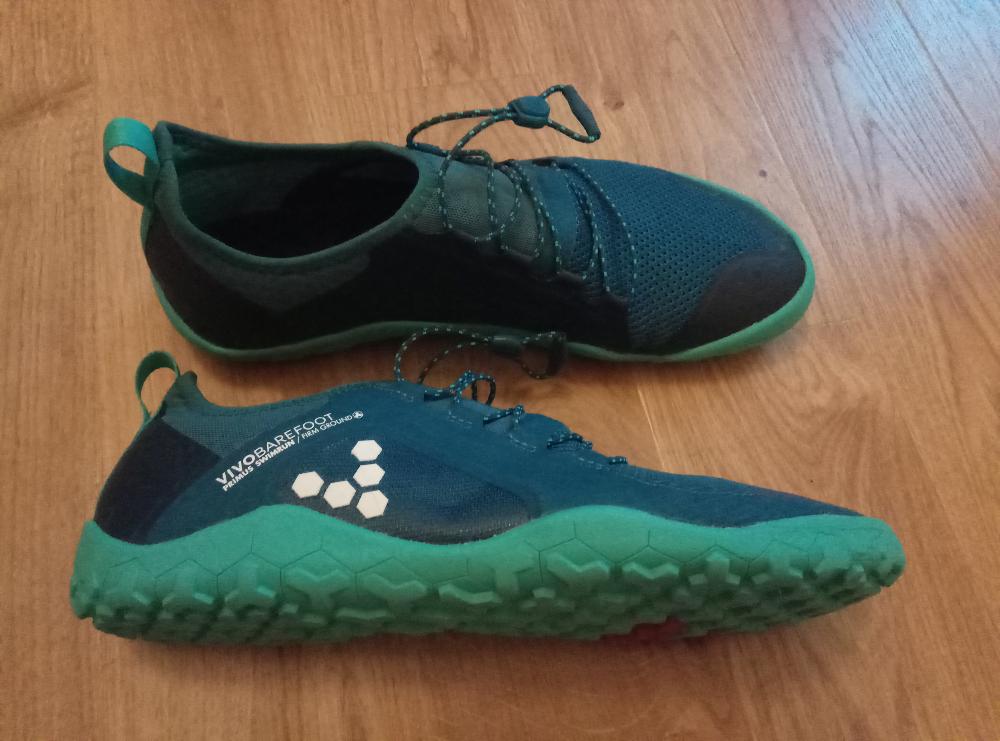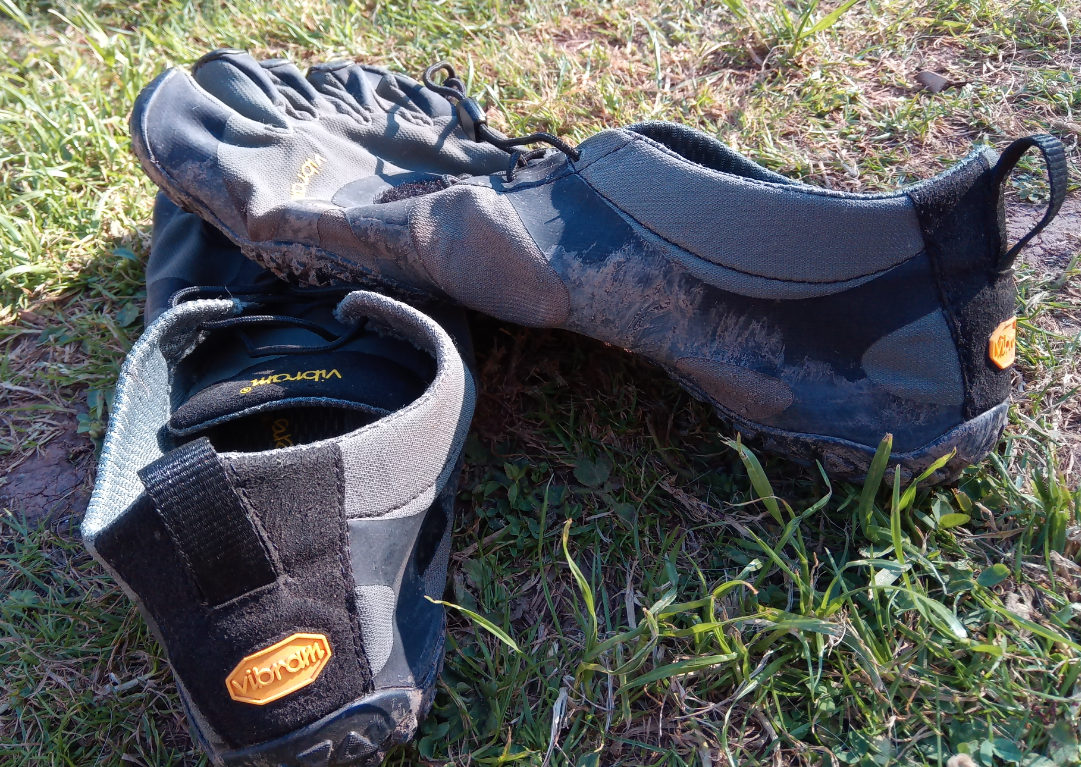I get asked this a lot. There's no best answer, however a few tips and tricks might help you to make the best decision for your needs to help you start the amazing sport of swimrunning.
The review below is for several different types of shoe, having tried and tested all of them over the last couple of years. Reviews are split the reviews into key areas and do not get sponsorship from any of the manufacturers!
All feedback is my own personal opinion.
Standard Trail Running Shoes
If you want to try swimrunning but do not want to go and blow loads of money then you do not need to go out and buy specialist shoes. I started out using normal trail running shoes. In this case a pair of battered Salomon SpeedCross.
.jpg)
In fact, this type of shoe will invariably float and can give some propulsion when you kick, so are a perfectly feasible option for beginners. There are however a few things to be aware of:
Tongue
The tongue is not designed for swimming so will actually act like a brake when your feet are in the extended, pointed position in the water. Trim the tongue down so it is flush with the top of the shoe and sew up the cut, so there is no resistance in the water.
Drainage
The pair above were really beaten up with splits in the upper shoe but that actually helped drainage! If the soles have some life left in them, consider drilling some small holes between the lugs to aid drainage.
Shoe Body
Obviously the shoe body is designed for running so likely consists of a lace up shoe, which may or may not have a sewn in tongue. A sewn in tongue is better as it will help keep sand and grit out.
Weight
Although they may be marketed as super lightweight, once they get wet they are not. So choose a pair with no frills and minimal cushioning as this will just absorb more water.
Drop
This is the amount of drop from the heel to the ball of the foot. It is best to use minimal drop shoes if you have them, as swimrunning requires maximum flexibility and sensory input when scrambling out of the water into the run, so your toes can literally curl around the rock surface as if you were barefoot. Higher drop shoes are also heavier and in my experience cause more drag in the water.
Merrell Tough Mudder

Tongue
There is no tongue on this swimrun shoe. They're designed for swimming so the upper shoe consists of a neoprone sock style and the flap you see above points downwards to minimise resistance and is designed just to cover the string tie..
Drainage
The upper shoe has numerous tiny holes throughout so water drains immediately.
Shoe Body
Consists of a neoprene sock that slips onto the foot. Tough nylon loops help you to pull the shoe on. The tight fitting sock design helps keep grit and sand out and keeps the shoe snug to your foot when swimming. Has a quick pull lace system.
Weight
Very light. No cushioning on the upper shoe, no water absorption.
Drop
Minimal drop, 3-4mm, means the feet are fairly responsive and good for long distances of 20km plus.
Sole and Tread
These have a great tread on the sole, absolutely essential for varied and wet terrain.
Vivobarefoot Primus
An extremely good swimrunning shoe and very well made, with well thought out features. They come with a more expensive price tag of around £120 but they are worth it.

Tongue
No tongue, upper shoe consists of a neoprone sock that fits closely around the foot. Extremely comfy sock-like feel.
Drainage
The upper shoe is nylon mesh and drains instantly.
Shoe Body
Neoprene sock variety. Very comfy fit. Nylon loops help you to get the shoe on and off. These shoes seem not to let in any sand at all so reducing the chance of blisters due to grit/sand on the foot. Quick pull lace system. Extremely tough and well made, the pair above have been in use for a year and show no signs of wear.
When you walk/run barefoot or use barefoot shoes your feet adopt a more natural shape with a wider forefoot and splayed toes. These shoes are designed to accommodate that and the result is a wider front area compared to 'normal' running shoes, which also helps with kick propulsion.
Weight
Very very light. Absolutely minimalist. No water absorption means they do not weigh any more when wet.
Drop
No drop. These are so-called 'barefoot' shoes, and you feel like you are running barefoot. This does take some getting used to and I had to change my running style (I think for the better), to more of a forefoot, natural style, which took some time to get used to. The effect in the water is also very positive and you can get decent propulsion despite the fact you're swimming with shoes on.
Sole and tread
Vibram Five Fingers
These are superb shoes and are the ultimate minimalist barefoot running shoe and, in my experience, are superb for swimrunning. Don't just don a pair of VFFs if you're just starting out though! Your feet will need time to strengthen and become accustomed to barefoot running. They range in price from £80-£120 but once you're feet become adapted to barefoot running you'll love them!

Tongue
Tongue is short and moulded and does not protrude out of the shoe to cause drag. Extremely comfy sock-like feel.
Drainage
Many models have mesh uppers and drain immediately.
Shoe Body
Fit like a glove... for the feet! Each toe has its own snug fitting 'finger' (if that makes sense?!) and the shoe body is a close fitting sock like design. There is no movement of the shoe on the foot and they're designed to be worn without socks. (Although fingered socks can be bought/used if you want).
I have been using these for years and LOVE them! I have never had blisters and the feel on the ground is amazing.
These shoes are as minimal as they get - with only 2mm max 3mm of rubber sole between your feet and the ground, you can feel everything and respond accordingly.
When you walk/run barefoot or use barefoot shoes your feet adopt a more natural shape with a wider forefoot and splayed toes. These shoes allow your toes to splay on the ground and also in the water aiding propulsion when kicking.
Weight
VFFs weigh next to nothing even when wet. You hardly know you're wearing them.Drop
No drop at all. Very minialist, like walking barefoot, extremely responsive, allow your toes to curl/wrap around difficult terrain, roots, rocks etc. In other words, be a kid again!
Sole and tread
Conclusion
There's an entire school of thought on barefoot running and minimalist shoes and you are sure to find loads of information on both sides of the debate, with protagonists of barefoot running saying it's good for the foot and other experts saying barefoot running damages them.
Personally, I am of the mind we humans evolved to run long distances barefoot, not in shoes. I will not deny they take gettiong used to - we have been wearing bad shoes for decades and your feet will need time to strengthen and splay. But, in truth, since I have been using minimalist shoes (I have several pairs of Vibram FFs now), I enjoy running more and have had less direct running related injuries such as twisted ankles, which I used to get all the time with clunky, high-drop trail shoes, purely because they remove all contact and thus all feeling between the foot and the ground.
I think that's another discussion though and it is ultimately a case of 'each to their own'!
The final message here is: swimrunning shoes are designed for just that - swimming and running.
Keep them simple, the less frills the better, and think about the drag factor and the drainage, because you'll only be dragging them through the water on the swims then trudging up cliffs or beaches on the other side!
Good luck!
